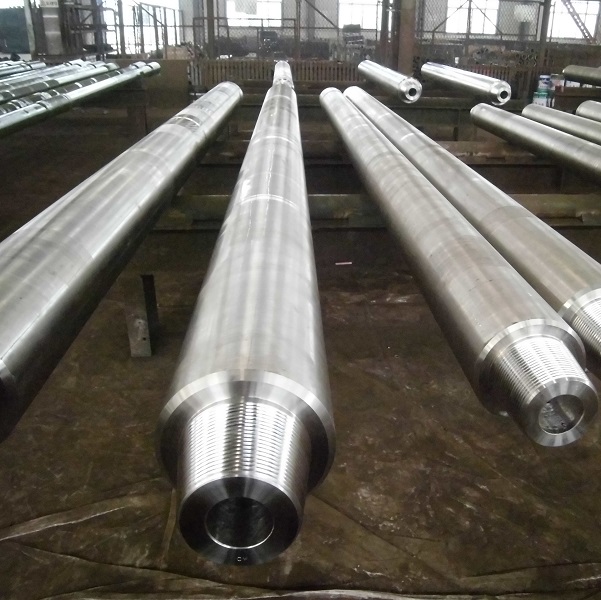Non-Magnetic Drill Collars: Unlocking Efficiency and Precision in Drilling Operations
Non-Magnetic Drill Collars: Unlocking Efficiency and Precision in Drilling Operations

Introduction:
In the world of drilling operations, precision, accuracy, and efficiency are paramount. To achieve these goals, various drilling components and technologies are employed. One such essential component is the drill collar, a thick-walled tubular steel pipe that provides weight to the drill bit and helps maintain the drill string’s stability during drilling. However, in certain drilling scenarios, the presence of magnetic materials can cause interference and inaccuracies in downhole measurements. To overcome this challenge, non-magnetic drill collars have emerged as a game-changing solution. In this article, we will explore what non-magnetic drill collars are, their construction, benefits, and their impact on drilling operations.
Understanding Non-Magnetic Drill Collars:
Non-magnetic drill collars are specially designed drill collar variants that are manufactured using non-magnetic alloys or composite materials. Unlike conventional drill collars made of magnetic steel, non-magnetic drill collars minimize the magnetic interference caused by ferromagnetic materials, ensuring more accurate downhole measurements, reducing survey errors, and enhancing drilling efficiency. These collars are crucial in operations where precise measurements of the Earth’s magnetic field are required, such as in magnetic surveying, directional drilling, and wellbore positioning.
Construction and Materials:
Non-magnetic drill collars are engineered using materials that exhibit low magnetic permeability. Common materials used include austenitic stainless steels, such as 316L or 304L stainless steel, which have inherently low magnetic properties. These alloys are selected for their non-magnetic nature, excellent mechanical strength, and resistance to corrosion. The manufacturing process involves stringent quality control measures to ensure the desired magnetic properties and mechanical integrity of the drill collars.
Benefits and Advantages:
The use of non-magnetic drill collars offers numerous benefits in drilling operations:
- Improved Measurement Accuracy: Non-magnetic drill collars eliminate magnetic interference, enabling more precise and reliable downhole measurements, especially in magnetic surveying and directional drilling applications. This enhances the accuracy of well placement, reduces the risk of drilling errors, and improves overall drilling efficiency.
- Enhanced Wellbore Stability: Non-magnetic drill collars provide the necessary weight and stability to the drill string while minimizing magnetic interference. This ensures optimal wellbore stability, reducing the chances of hole deviation and improving drilling performance in challenging formations.
- Reduced Non-Productive Time (NPT): Accurate downhole measurements and improved wellbore stability achieved with non-magnetic drill collars contribute to reduced NPT. The elimination of magnetic interference reduces the need for corrective actions, such as frequent trips out of the hole or extra survey runs, leading to cost savings and increased drilling productivity.
- Increased Surveying Efficiency: Non-magnetic drill collars streamline the surveying process by minimizing errors associated with magnetic interference. This allows for more efficient and reliable data acquisition, enabling quicker decision-making, improved well placement, and optimized drilling trajectories.
- Compatibility with Drilling Tools: Non-magnetic drill collars are designed to be compatible with various drilling tools and technologies, including measurement-while-drilling (MWD) systems, logging while drilling (LWD) tools, and magnetic ranging systems. This compatibility ensures seamless integration into drilling operations and facilitates accurate data acquisition for real-time decision-making.
Applications and Limitations:
Non-magnetic drill collars find widespread applications in various drilling scenarios, including magnetic surveying, geosteering, and directional drilling in areas with high magnetic interference. However, it’s important to note that non-magnetic drill collars may have limitations in terms of their mechanical strength and resistance to wear and tear compared to traditional magnetic drill collars. Therefore, careful consideration must be given to the specific drilling conditions and
operational requirements when selecting and utilizing non-magnetic drill collars.
Conclusion:
Non-magnetic drill collars have revolutionized drilling operations by addressing the challenges posed by magnetic interference. Through the use of non-magnetic materials and meticulous manufacturing processes, these collars provide accurate downhole measurements, improved wellbore stability, and increased drilling efficiency. As the industry continues to advance, the demand for non-magnetic drill collars is expected to grow, further enhancing the precision, reliability, and overall success of drilling operations worldwide.
